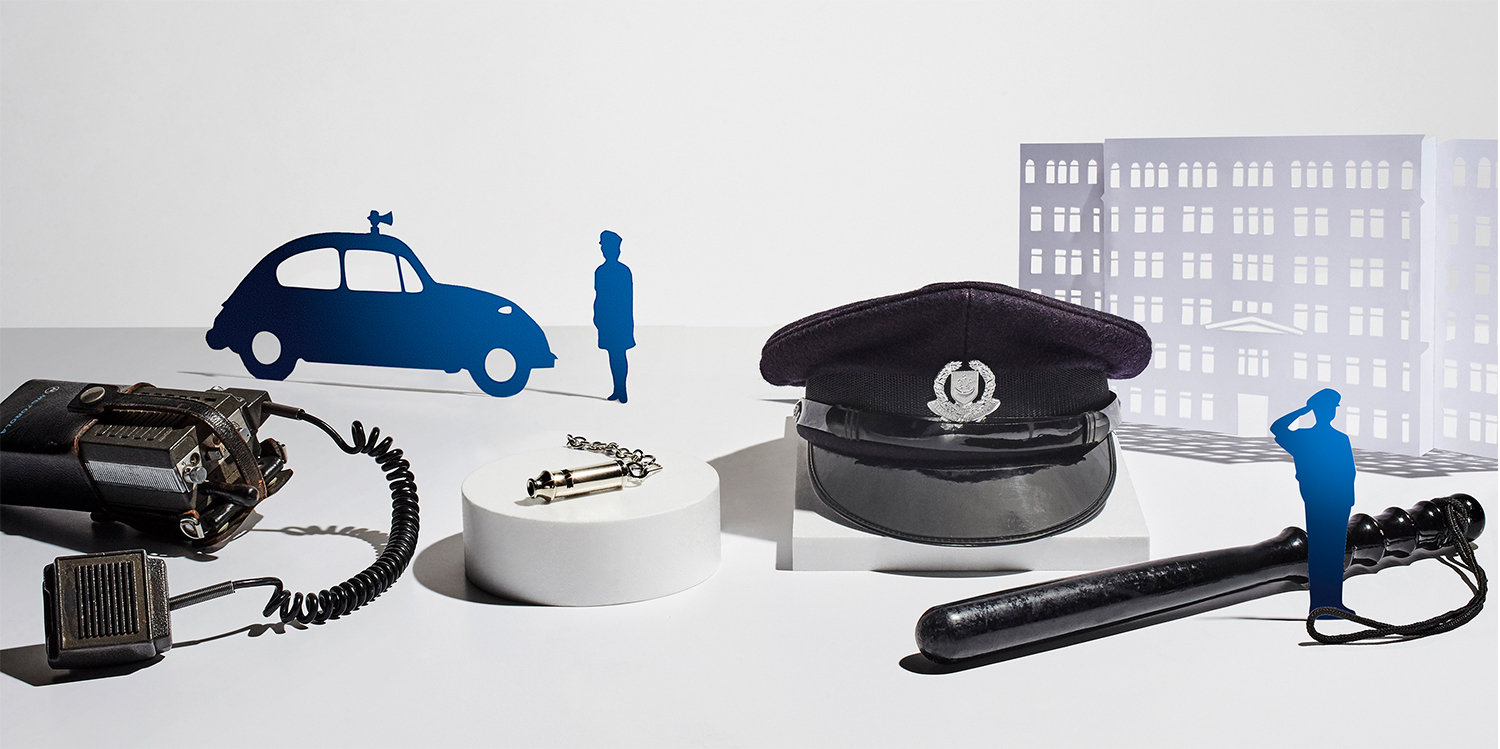TEXT: SOL E SOLOMON
PHOTOGRAPHY: FRENCHESCAR LIM
DIGITAL IMAGING: OKTO PIXEL

TEXT: SOL E SOLOMON
PHOTOGRAPHY: FRENCHESCAR LIM
DIGITAL IMAGING: OKTO PIXEL
WALKIE-TALKIE
In the 1970s, traffic police officers used portable radio sets, which allowed staff in the traffic ops room to reach ground officers via a two-way network. This feature could be activated one-to-one or broadcast as a message to many on a talk group, but the network was not encrypted and, thus, not secure. It has since been replaced by a digital-based encrypted system, which provides a secure network for all communications.
WOODEN BATON
The weapon’s design was based on the principle of using “minimum force”, but it was also a symbol of peacekeeping and honour. The baton was used in defence to subdue a target without causing undue hurt, and featured in ceremonial salutes and drills in the 1950s. In 2001, the wooden baton was replaced by a retractable T-baton with an extendable side handle that made it less bulky and more versatile.
POLICE PEAKED CAP
Policemen wore this since 1969 but it felt bulky and stiff. In 1999, enhancements were introduced to make it waterproof and softer to the touch. A reflective side strip was also added to increase a policeman’s visibility at night. The peaked cap remains part of the police uniform and continues to be worn mainly during formal occasions.
WHISTLE WITH CHAIN
Since the early days of policing, the tubular-shaped metal whistle has been used by officers to draw attention to a crime or call for back-up. Better communication technologies have since made whistles lessuseful and they were phased out in 2002.





